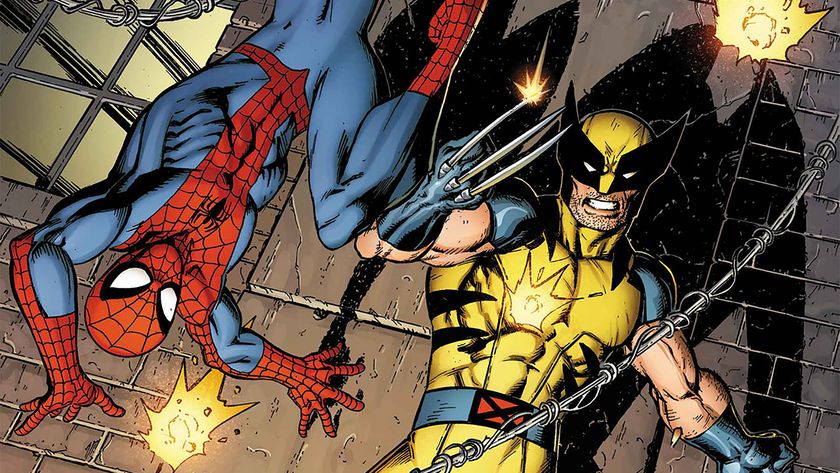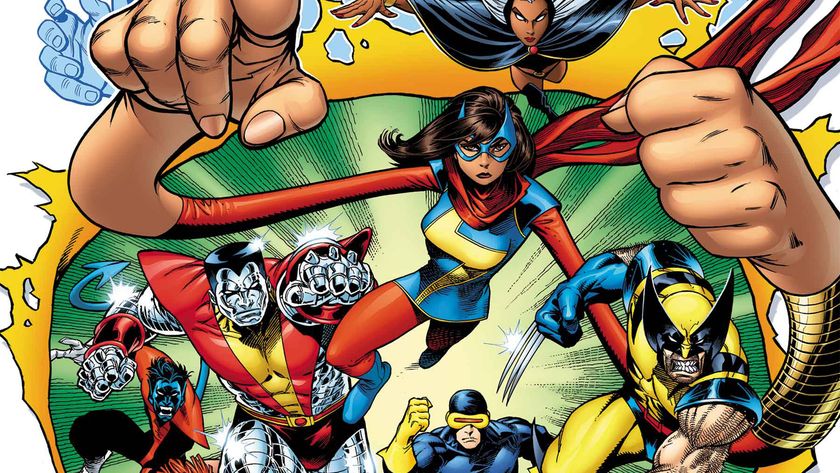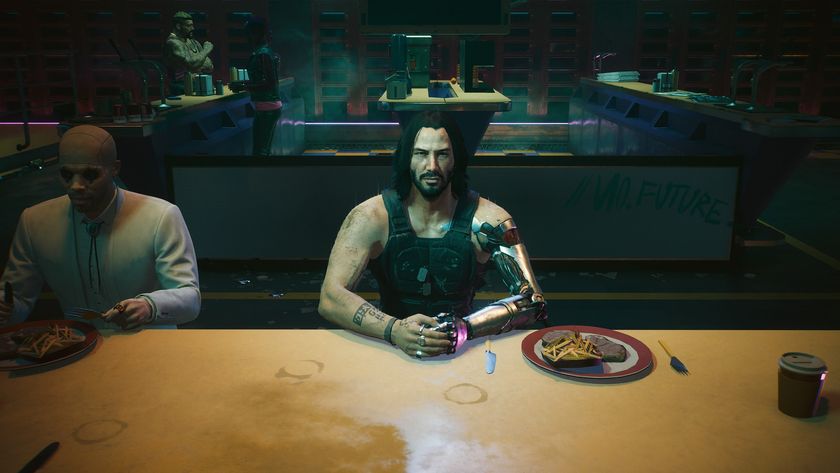Crime noir comic The Good Asian explores the identity, struggle, and history of Asian-Americans
Pornsak Pichetshote and Alexandre Tefenkgi create a Chinatown crime noir with modern sensibilities
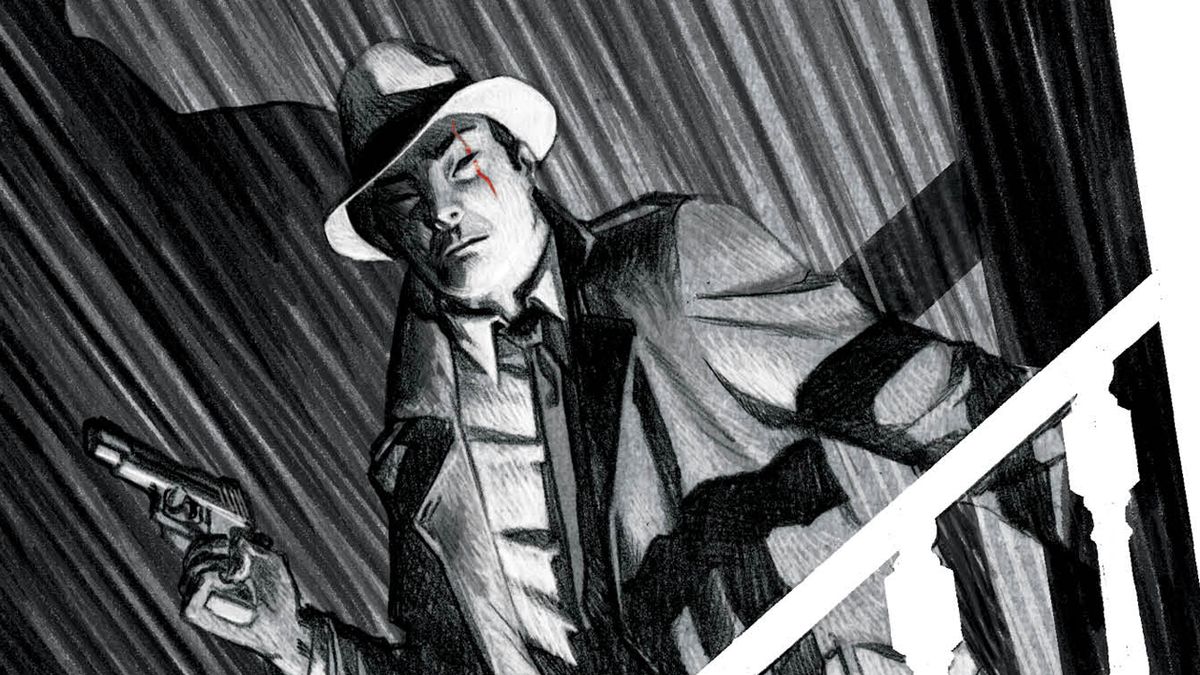
The mythic Chinatown of crime noir is getting a dose of real-life thanks to a new comic book series called The Good Asian.
Writer Pornsak Pichetshote (Infidel) teams with artist Alexandre Tefenkgi (Outpost Zero) on a nine-issue series that explores the history and struggle of Asian-Americans in the first half of the 20th century through the lens of crime noir.
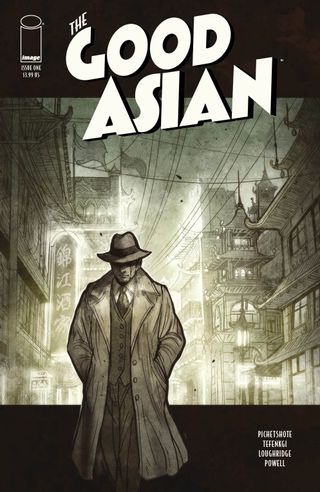
The Good Asian centers on Edison Hark, an Asian detective raised by a white family, witnessing first-hand how the first generation of Chinese Americans are being affected by the Chinese Exclusion Act, a real act that banned Chinese immigration. The landscape is besieged by rampant murders, abusive police, and a world that seemingly never changes.
Before The Good Asian #1 hits comic book stands on May 5th, Newsarama had the chance to chat with Pichetshote and Tefenkgi about their detailed research sessions to create this historical fiction, the current events that inspired the creative team to bring this series to life, and how the book explores a different side of detective and noir genres.
Newsarama: Pornsak, tell us a bit about The Good Asian's main detective, Edison Hark. How is he different and/or similar to the popular detectives of the genre?
Pornsak Pichetshote: Hark was inspired by the many Asian detectives of the '30s, but here's the thing: The first Asian-American detective in mainland America wasn't until 1957.
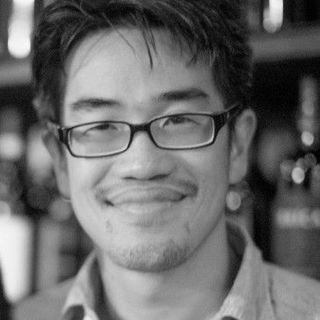
The only place you could find Asian-American detectives in the '30s was Hawaii, so Edison Hark, like Charlie Chan, was inspired by real-life Hawaiian detective Chang Aparna, who very much policed other Chinese people. In that sense, he was a race traitor. So here you have a detective who became a cop because he wanted to do the right thing only for his community to see him as a traitor – and for him to wonder if he just might be one.
Comic deals, prizes and latest news
Get the best comic news, insights, opinions, analysis and more!
The title "The Good Asian" is an allusion not just to the model minority myth Asians deal with, but also brings up the idea of what constitutes a "good Asian?" To what degree, should you show loyalty to the place you're living in and its laws? To what degree, should you show loyalty to your people or your culture or your heritage? That conflict between the place you're living in and the culture you come from resonates deeply to me as an Asian-American and I hope it does with other children of immigrants.
Plus, as will be explored in the first issue, Edison Hark was raised by a rich, white family, because that kind of patronage was the only way an Asian could have been a police detective at that time. So, it also becomes a story about privilege, and as an Asian with privilege, what his responsibility is to other Asians.
Nrama: Alexandre, what went into designing Edison Hark?
Alexandre Tefenkgi: For the main character Edison Hark, we wanted a character that could kick ass without going into a Bruce Lee cliché. I envisioned a person that would be charismatic without being over the top. Someone that would stand out a bit by his look, but mainly by his acting.
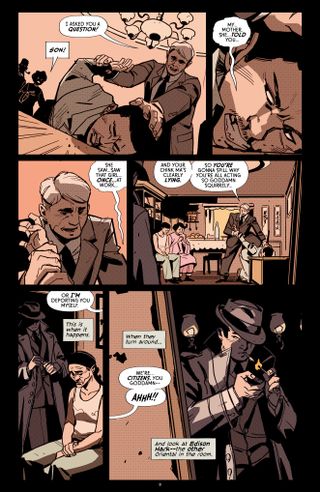
I looked over the internet and finally found two actors that caught my interest; Sessue Hayakawa and Jin Yan, two actors in the '30s that could be a fit for our casting.
Nrama: How did you two connect for this title?
Pichetshote: My editor Will Dennis and I are both friends with Cliff Chiang, who recommended Alex. And Cliff's such an immense talent with great taste that when he recommended you, we were almost like, 'Do we even need to look at his stuff before making him an offer?' But of course, we did, and the stunning results speak for themselves.
Tefenkgi: One of my good friends, Cliff Chiang, talked about me to Pornsak and connected us to talk about a possible project. The rest will be in your hands next May.
Nrama: How much research went into crafting this story?
Pichetshote: So much research. SO MUCH RESEARCH. I'll be honest,
I don't totally remember when I started researching this book, but it actually began before my previous comic Infidel in 2018. If you're looking at Chinese-Americans in the '30s and the generational impact of how the Chinese Exclusion Act affected them, you're not going to find many books.
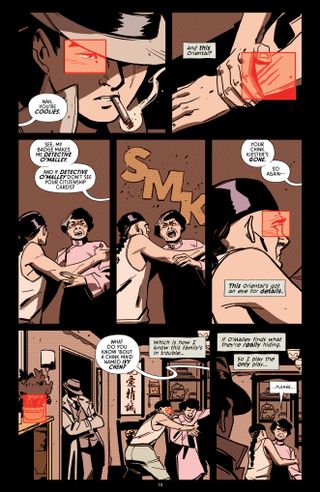
So, what I had to do was Tetris together research from different sources – some that focused on immigration, some that focused on Asian-American lifestyle in the '30s, some that focused on their relationship to the police and composite a picture together.
I've always believed that one of the reasons people come to fiction, is because they're looking for the truth between the facts, and that's really what I strove for here.
Nrama: What were some of the most fascinating facts you found during that research?
Pichetshote: I mean, every issue features things that shocked me. The fact that the women who worked the Chinatown Telephone Exchange (the switchboard dispatch for every call in and out of Chinatown) had every phone number and address in Chinatown memorized is amazing.
But really, the fact that, as an Asian-American, I didn't know anything about the Chinatown Exclusion Act (America's first immigration ban) and from there, the Immigration Act of 1924 - which prohibited the number of Asians and Arabs entering America until it ended in 1965 – was something I was both ashamed and amazed I didn't know and was really the inspiration for writing the series.
Nrama: What research went into drawing 1936 Chinatown, Alexandre?
Tefenkgi: On this project, I'm very lucky, because Pornsak did all the groundwork for the documentation. With each issue, I get a well-organized folder with pictures and videos of the locations whenever possible. I also get all the documentation about the fashion and architecture of this era. On my end, I use google and Pinterest for the extra research.
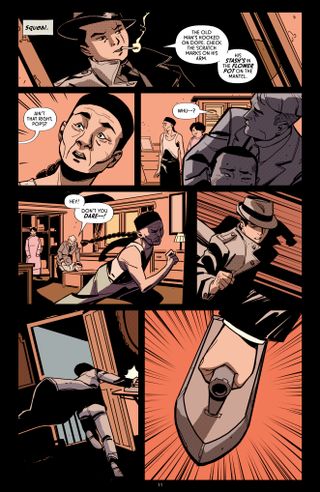
Nrama: With such heavy research, how long did it take from concept to production for this project to come to life?
Pichetshote: Like I said, that's a really tough question. I started researching it even before I started writing Infidel in 2018. I had the idea since 2016 maybe (?) and the research has been off and on since then, picking up in earnest after I finished Infidel.
Nrama: Alexandre, what about the story drew you to the project?
Tefenkgi: First, I thought the story was well written and entertaining.
I'm not well versed in the detective genre but the story of this Asian detective who was raised within different communities, with different perspectives of life, sometimes on opposite sides of the spectrum was a nice hook to me. I felt there was a richness in the theme and authenticity in its sub-theme. I thought 'Ok, I think I can bring something to this project.'
I don't have to stretch to feel empathy and interest. I could even use my own experience and express something that really fits the story.
Nrama: This is going to be a nine-issue series. How did you decide on the length?
Pichetshote: The Good Asian is Chinatown noir – a 1936 detective story featuring the first generation of Americans to grow up beneath an immigration ban of their own people – the Chinese. So, for me, I wanted it to be a big, twisty-turny mystery with lots of layers and dark, compelling characters, but I also wanted it to talk about the Asian-American history that I think has gone largely overlooked.
I wanted it to be about Asian-American themes, even as I asked myself, what exactly are Asian-American themes? So, in that sense, this is a detective story even on a meta-level.
So, breaking this story out meant not just figuring the moves of the story and the development of the characters, but also all the "Asian-American themes" the book wanted to encompass. Once I had that all locked down and beaten out, I realized I needed at least nine issues to tell the story right.
Nrama: Why did you want to set the story in 1936 Chinatown?
Pichetshote: There are a few reasons behind that. One was because I wanted to reinterpret the Asian detectives of the '30s and '40s like Charlie Chan, Mr. Moto, and Mr. Wong: Detective and bring them in line with the actual history of Asian-Americans.
But I was also fascinated about writing about an entire generation of Chinese-Americans who grew up with an immigration ban of their own kind being all they knew. What did that do to their sense of identity and self? To their sense of America? Especially since when I started in earnest writing the book, America had its Muslim ban going, it seemed like it an interesting case of speculative fiction set in the past.
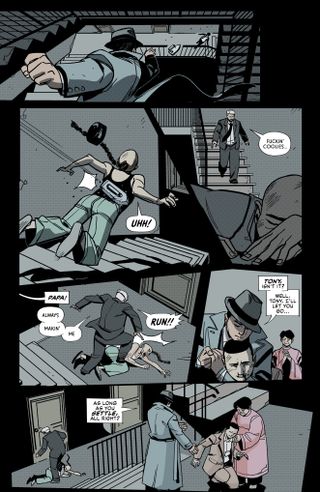
What I didn't expect was for it to become so timely. For anti-Asian hate crimes to skyrocket this past year, a lot of them to target our elderly.
I don't know where things will be at by the time this interview runs, but in today's headlines alone, a Buddhist temple in Los Angeles was set on fire; an explosive was set off outside the Nebraska Chinese Association; and stats have come out saying anti-Asian hate crimes have increased 717% in Vancouver, which sounds like a lot until you compare it to the estimated 1900% they've increased in New York City.
So, this story I thought could act as speculative fiction as to what a Muslim ban could look if it went on for generations has become my way of processing the America it feels I'm living in now. Where people flock to see crazy, rich Asians but still seem to ignore the pain of poor, working-class ones. By the way, if anyone's further interested in keeping up to date with those developments, I encourage them to visit nextshark.com which does a great job reporting on it. But yeah, I now very much wish the book was less timely.
Nrama: What do you enjoy about the noir genre?
Pichetshote: I love that it's about flawed protagonists. I love that it's about strong people trying to find their place. I love that it's about bleak worlds and outlooks. Given these current times, that feels right.
But also, with the pulp detectives I've been drawn to and draw from, it's also about people trying to do the right thing despite the darkness. And in the process, their moments of selflessness, compassion, and courage seem all that much more noble and heroic given everything else that is happening in their world. Given these current times, that also feels right.
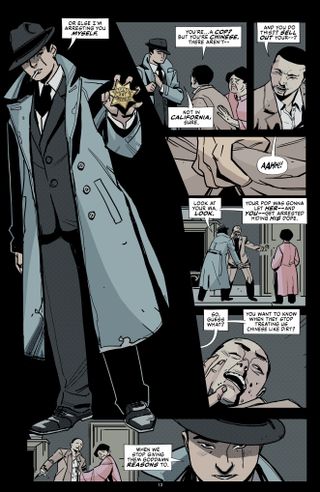
Because for me, while the book is about a dark, overlooked time in American history. The story of Edison Hark is also about how things changed – and what was sacrificed along the way.
Nrama: Are there other detective stories or comics that inspired your style for this book?
Tefenkgi: I really love all kinds of comics/ European comics/ Manga and am interested in the different ways to interpret the genre.
I grew up with European comics so that's my first inspiration. The first time I read Blacksad by Juanjo Guarnido and Juan Diaz Canales 20 years ago I was so blown away that it became one of my top references for the detective genre. As for the US comics inspiration, Alex Toth is a staple for me. I often go back to his books at least once a year.
Other than that, I discovered Lobster Johnson by Mike Mignola and Tonci Zonjic quite recently. I love the decision-making in the art. It's really well designed and the style fits perfectly with the story's era. Batman is also one of my sources of inspiration.
On the manga side, I can tell you that Monster and 20th Century Boys by Naoki Urazawa had a significant impact on my artistic direction. I'm such a fan of Naoki's work. There's always one of his books near my desk or on my iPad!
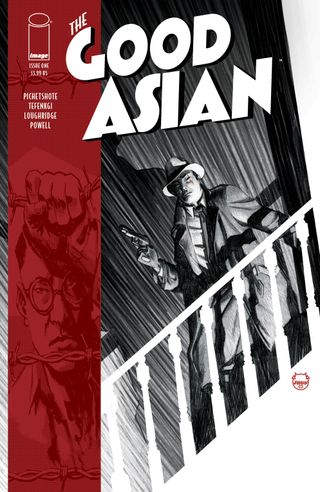
Finally, one of my favorite European artists is Denis Bodart. What he does is just so appealing to my eyes that I can't stop going back to it. If you've never read Green Manor by Denis Bodart and Fabian Velhmann, you're missing something: a beautiful crime-solving mystery book.
Nrama: With the book having Asian leads, how did you believe that perspective would help bring something new to the genre?
Pichetshote: Well, Chinatown itself is kind of iconic in noir. That's from many things, certainly Polanski's Chinatown and the work of Dashiel Hammett, especially short stories like Dead Yellow Women.' In them, Chinatown is this exotic place full of danger and intrigue.
But what history has taught us is that we exotify things to justify our own exploitation of them. So, I liked the idea of flipping that lens. Of doing a noir story about the people that have been exotified, exploited, and demeaned in these stories. A people I obviously as an Asian-American feel really connected to.
Nrama: For fans of your other work, what do you think they'll enjoy about The Good Asian?
Pichetshote: Well, fans of my work probably know me from my last comic Infidel which explored racism and xenophobia within the context of a ghost story.
The Good Asian uses a different genre – in this case, crime noir – to explore, less racism in general, but the identity, struggle, and history of Asian-Americans – and racism is very much a part of that.
But it's also about that generation's perseverance and ingenuity. And how, when I look at that generation of Chinese-Americans, I see themes that reverberate to all of contemporary Asian-American culture. It's hard to ignore that almost a hundred years after this story takes place, the rate of anti-Asian hate crimes has skyrocketed across America and it's still pretty underreported in the news.
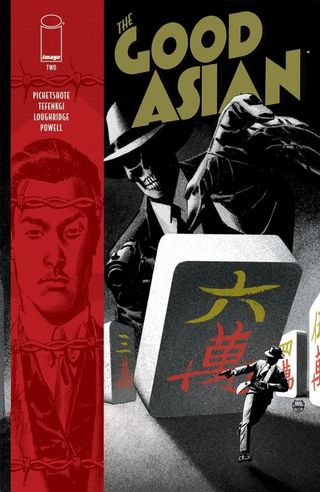
There's so much we're still not talking about the Asian-American experience and its history, and I hope people of my last book will appreciate me using a similar approach to talk about that.
Tefenkgi: They'll certainly find, as in my previous work, a gripping story with a dark ambiance of mystery. They'll find action, fight scenes, and suspense within a community that seems very much of their time and yet, as if they were on another planet sometimes.
Nrama: Would you like to do a sequel? Could you see exploring other Asian detectives in different time periods?
Pichetshote: I definitely know what a sequel looks like. I don't want to get too ahead of myself, but if people like this series, I can definitely see doing more stories, yes, in different time periods.
Tefenkgi: I love working with Team Pornsak, so it would be a pleasure to consider exploring the possibility. Why not in contemporary time? It could be interesting!
Kat has been working in the comic book industry as a critic for over a decade with her YouTube channel, Comic Uno. She’s been writing for Newsarama since 2017 and also currently writes for DC Comics’ DC Universe - bylines include IGN, Fandom, and TV Guide. She writes her own comics with her titles Like Father, Like Daughter and They Call Her…The Dancer. Calamia has a Bachelor’s degree in Communications and minor in Journalism through Marymount Manhattan and a MFA in Writing and Producing Television from LIU Brooklyn.
Most Popular







